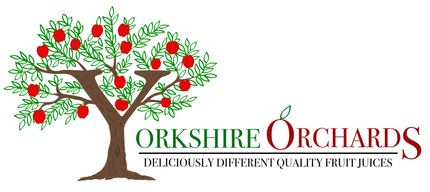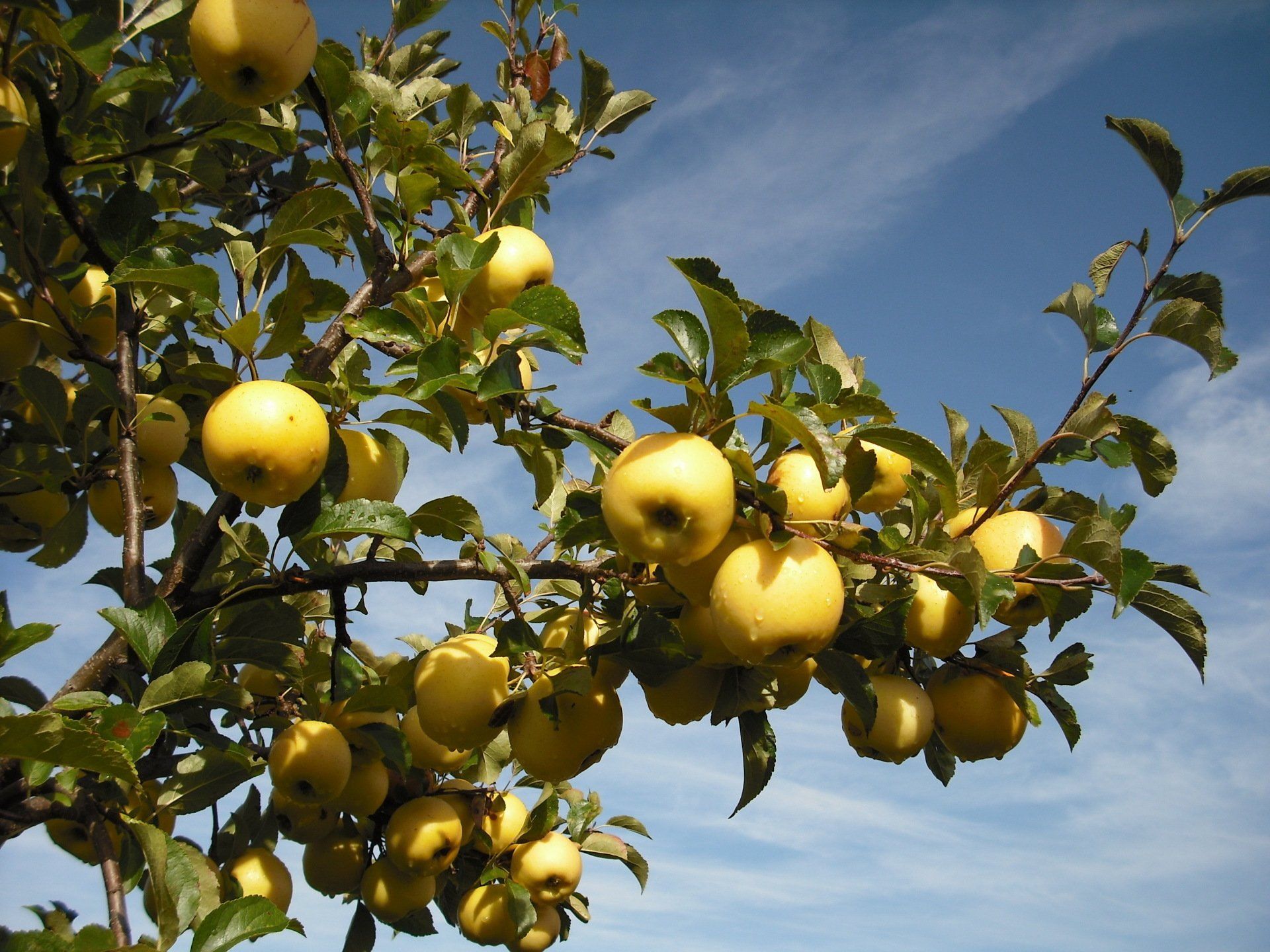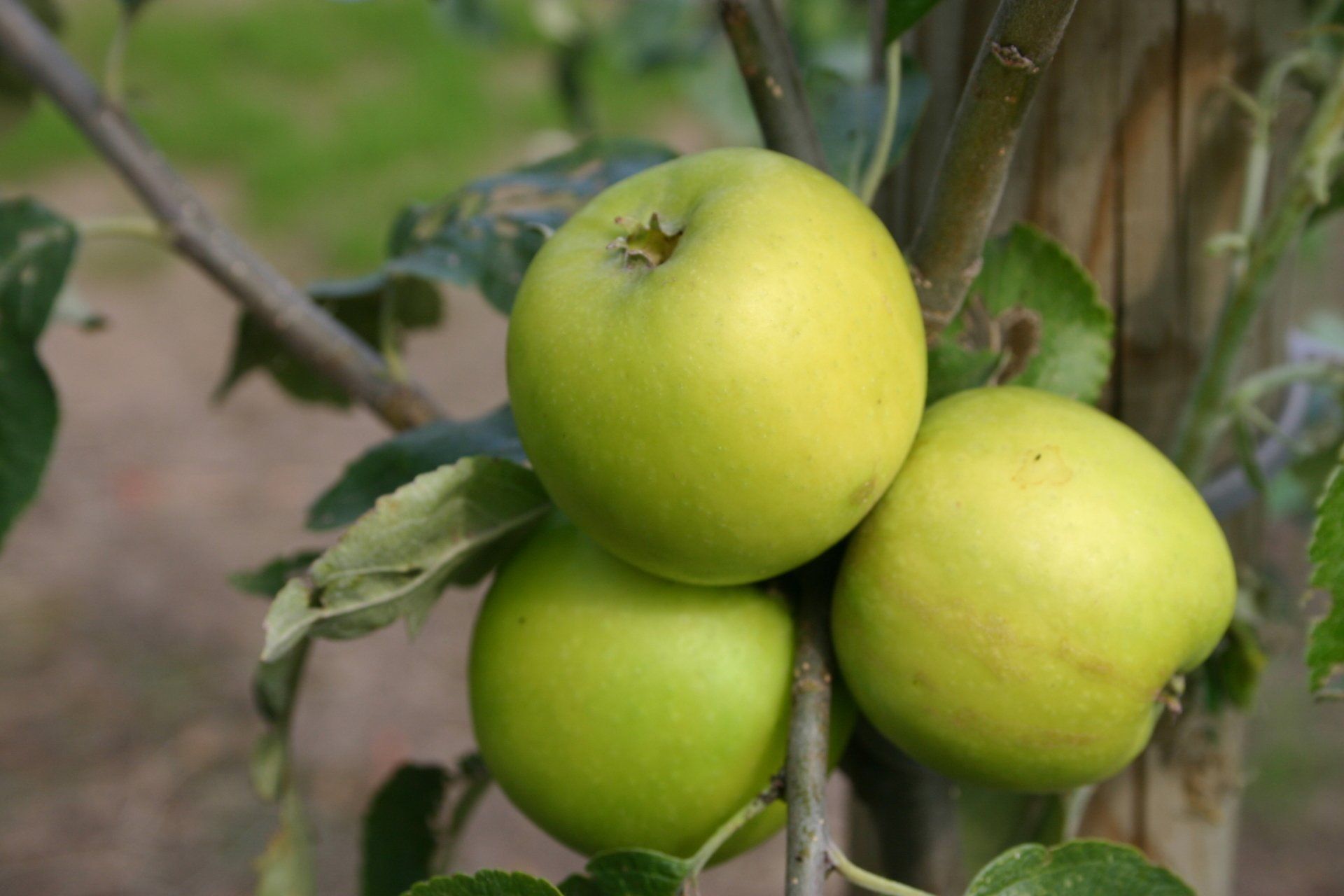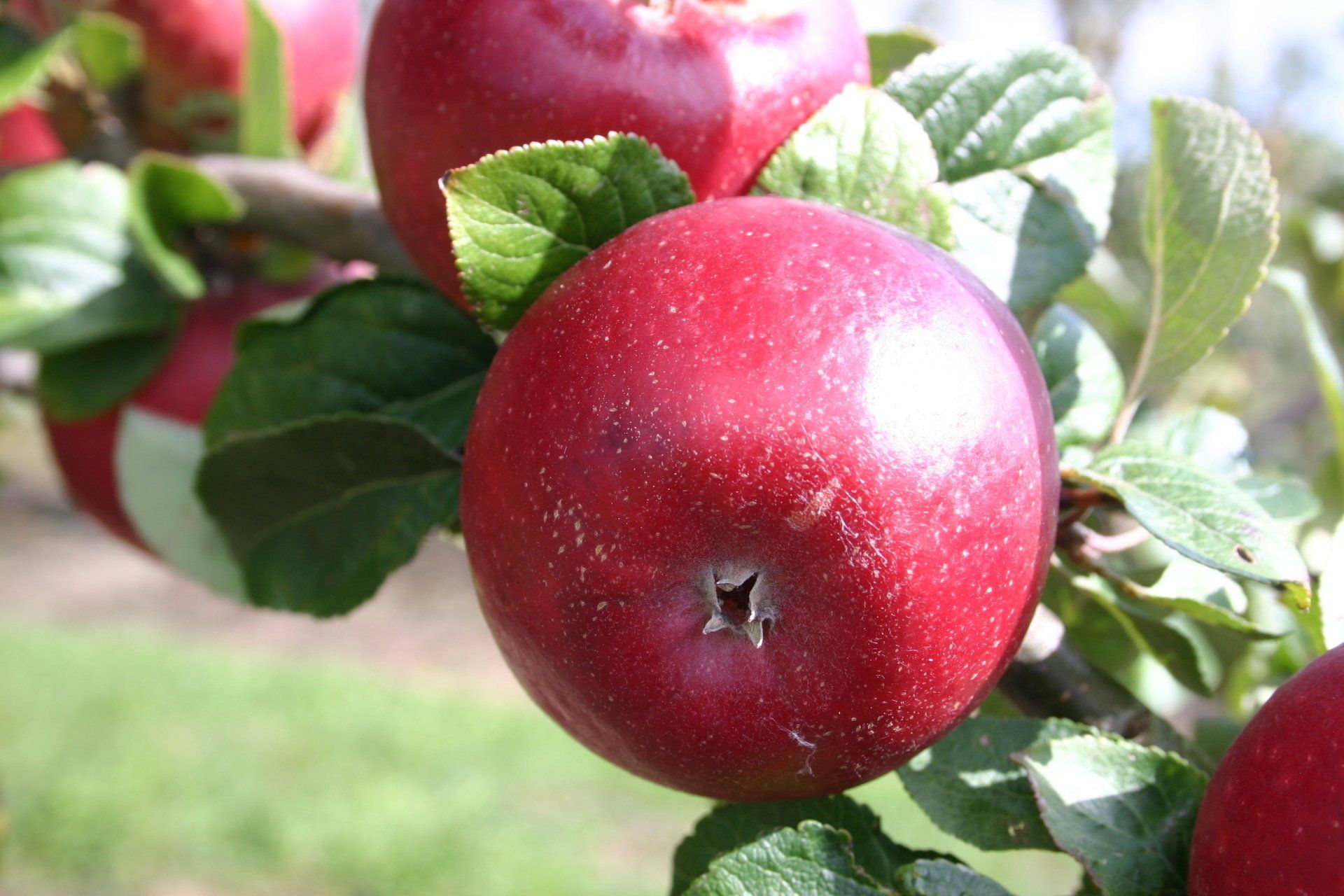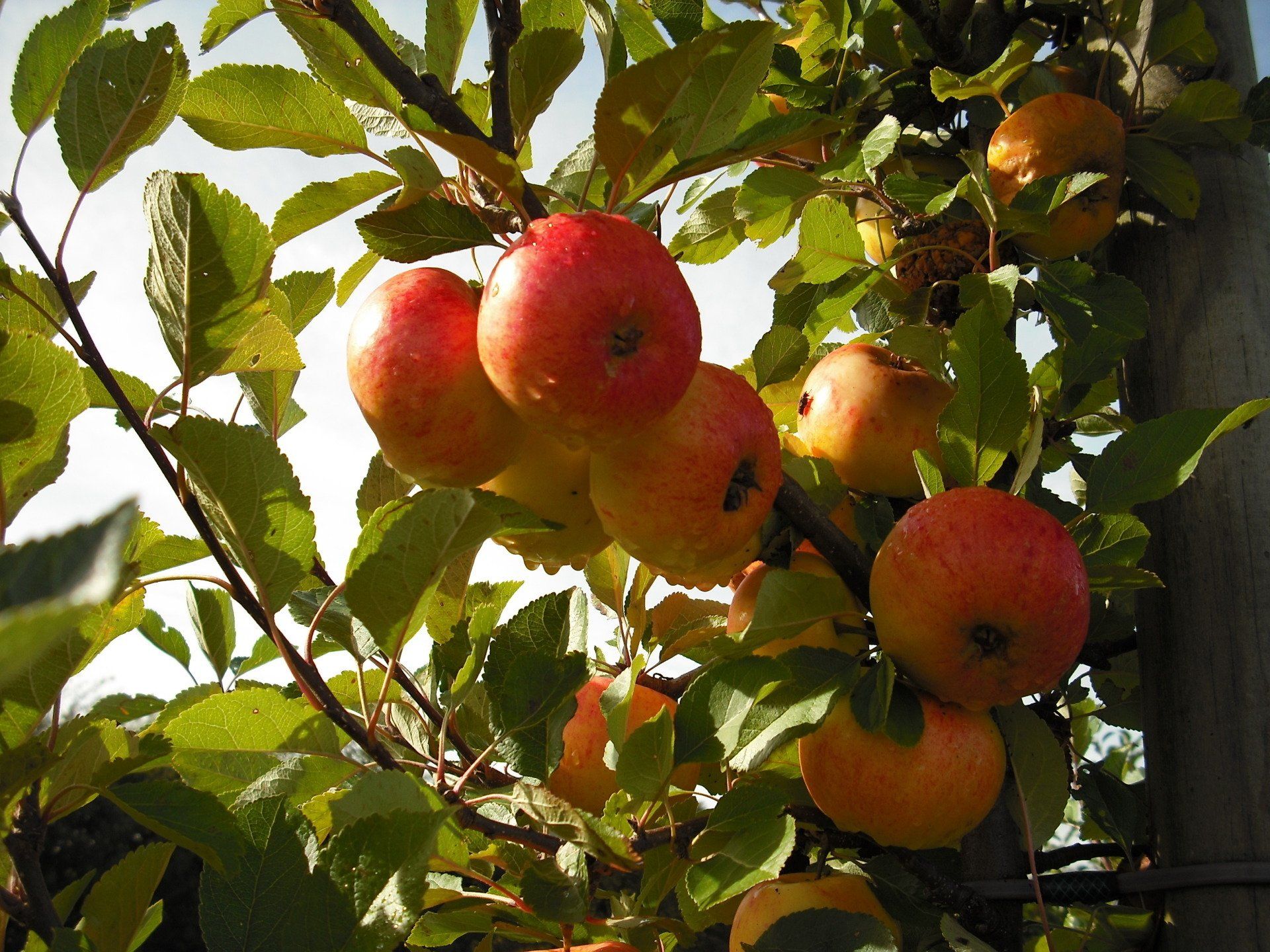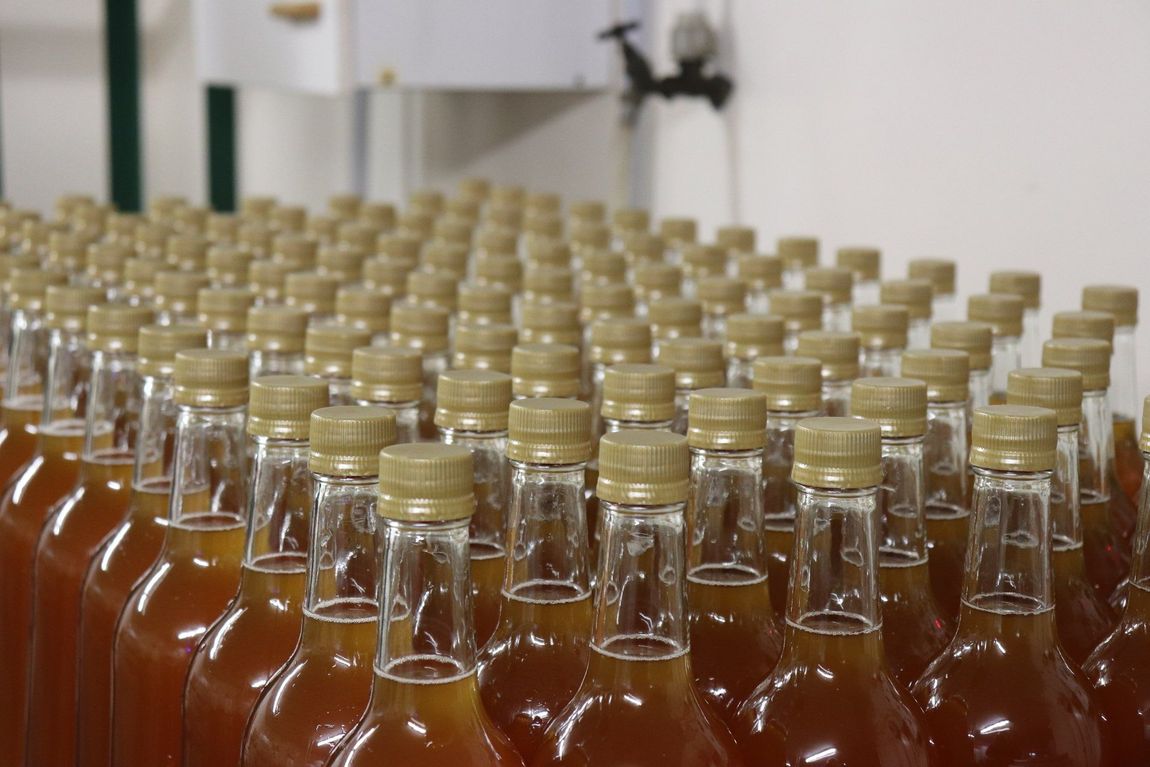Our Juicing Service
Just what do you do with all of those excess apples that your tree produces? There only so many pies to make, and so little freezer room. Why not have them turned into your very own juice? We also do pears, please ask us for more details.
As a rough guide, we would need at least 4 supermarket-sized boxes of fruit to have enough to press. This is a guide only to the minimum; you can bring more if you have it! We ask for a minimum as we have a big press and tanks etc. Any less and the machinery can't operate properly.
Please bring your apples in a strong container or box, as your juice bottles will be returned to you in the same box and will be very heavy! We use 750ml glass bottles (wine bottle size).
We do not add all of our customers apples to one tank and give you back a percentage of the juice; we guarantee that you will receive your own apples back as your own unique juice, with no added sugar or water.
A mixture of eating and cooking apples are perfectly fine to juice together and will often produce a lovely blend. All apples should be clean, sound with no rot or bruising. The odd lump, bump or discolouration is fine, as is scab or scarfing on the skin. Mis-shaped or small apples are perfect to juice too, they don't have to look good to press, but must be whole with no rot on them.
Any sound windfalls could be accepted, providing that they are washed and kept in a separate container. These must not be raked up from the floor and should not be bruised.
We can’t work magic with substandard fruit- if you can’t eat it, we can’t juice it!
Please note that this service is seasonal and only available from mid August until the end of November.
All apples must be booked in prior to drop off.
So what actually happens to make juice?
What happens to the pulped apples?
As a rough guide, there are approximately 15 dessert apples in every 750ml bottle of juice.
